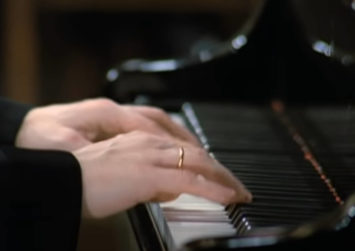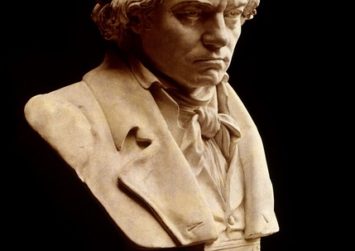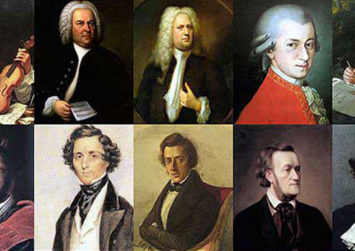Musical Notes Names: A Comprehensive Guide for Beginners
Updated:
Musical notes are the foundation of all music. Without them, songs would not exist. In order to create music, it is essential to understand the different names of musical notes and how they relate to each other.
The naming of musical notes is based on the first seven letters of the alphabet: A, B, C, D, E, F, and G. Each of these letters represents a specific note on the musical scale. These notes can be further modified by adding sharps (#) or flats (b) to create different variations of the same note.
Understanding the names of musical notes is crucial for musicians, whether they are beginners or professionals. It allows them to read sheet music, communicate with other musicians, and create their own compositions. By mastering the names of musical notes, musicians can unlock a world of possibilities and express themselves in ways they never thought possible.
A musical note is a symbol that represents a specific pitch and duration. The pitch of a note is determined by its position on the musical staff, while the duration is indicated by the shape of the note.
The most common musical notes are whole notes, half notes, quarter notes, and eighth notes. Each of these notes has a unique sound characteristic and can be combined to create melodies and rhythms. The sound of a musical note is determined by its pitch, which is the frequency of the sound wave produced by the note. Higher-pitched notes have a higher frequency, while lower-pitched notes have a lower frequency.
Understanding the representation and sound characteristics of musical notes is essential for any musician. By knowing how to read and interpret musical notes, musicians can create beautiful melodies and rhythms that are pleasing to the ear.
Understanding Musical Notes
Musical notes are the building blocks of music. They are represented by symbols that indicate the pitch and duration of a sound. The pitch of a note refers to how loud or quiet it sounds, while the duration refers to how long the note is played.
In Western music, there are 12 distinct notes in an octave, which repeat in higher and lower octaves. Notes are named using the letters A through G, with some notes having sharps or flats to indicate a slight increase or decrease in the pitch of the music.
Banknote names and symbols
Each note is represented by a symbol, which can be written on sheet music or displayed on a digital interface. The symbol consists of the name of the note and other elements that indicate the duration and pitch of the note.
The most common note symbols are quarter notes, half notes, and whole notes. Each symbol represents a different duration, with the whole note being the longest and the quarter note being the shortest.
In addition to the basic note symbols, there are also symbols for rests, which indicate a period of silence. Breaks are also represented by different lengths, with the full break being the longest and the quarter break being the shortest.
The musical staff
The musical staff is made up of five lines and four spaces. Each line and space represents a different pitch. The notes on the staff are read from left to right, and the position of the note on the staff determines its pitch.
How do musical notes work?
There are seven basic note names in music: A, B, C, D, E, F, and G. These note names are used to label the different pitches on the musical staff.
Each note name corresponds to a specific pitch. For example, the note C is always played at the same pitch, regardless of its position on the staff. The same is true for all of the other note names.
Sharps and Flats
In addition to the basic note names, there are also sharps and flats. Sharps and flats are used to indicate notes that are higher or lower than the basic note names.
A sharp (#) raises the pitch of a note by a half step, while a flat (b) lowers the pitch of a note by a half step. For example, the note C# is one half step higher than the note C, while the note Db is one half step lower than the note D.
The Seven Basic Musical Notes
A Note
The A note is the first note in the musical alphabet. It is often used as a reference point for tuning instruments. A note can be found in different octaves, and each octave has a different frequency.
B Note
The B note comes after A in the musical alphabet. It is often used in melodies and harmonies. B note can be played on various musical instruments, including guitar, piano, and violin.
C Note
The C note is the third note in the musical alphabet. It is often one of the first notes taught to beginners in music lessons. C note is also used as a reference point for tuning instruments.
D Note
The D note comes after C in the musical alphabet. It is often used in melodies and harmonies, and it can be found in different octaves. D note is also an essential note in many musical scales.
E Note
The E note is the fifth note in the musical alphabet. It is often used in melodies and harmonies, and it can be found in different octaves. E note is also an essential note in many musical scales.
F Note
The F note comes after E in the musical alphabet. It is often used in melodies and harmonies, and it can be found in different octaves. F note is also an essential note in many musical scales.
G Note
The G note is the seventh note in the musical alphabet. It is often used in melodies and harmonies, and it can be found in different octaves. G note is also an essential note in many musical scales.
In summary, the Basic Seven Notes are A, B, C, D, E, F, and G. Each of these notes has a unique sound and can be found in different octaves. These notes are the foundation of many musical compositions and are essential for any musician to learn.
Music Notes Symbols Basics
Music notes symbols have a long and rich history. The earliest known music notation dates back to ancient Greece, where symbols were used to represent rhythms and melodies. Over time, music notation evolved and became more complex, with the addition of symbols to indicate dynamics, tempo, and other musical elements. Today, there are a wide variety of music notes symbols used in different genres and styles of music, from classical to jazz to pop.
Note Heads
Note heads are the round or oval symbols that represent a specific pitch. They are placed on the lines and spaces of the staff to indicate which note to play or sing. The shape of the note head can also indicate the duration of the note. There are several types of note heads, including:
Whole note: A circle without a stem
Half note: A circle with a stem
Quarter note: A solid circle with a stem
Eighth note: A solid circle with a stem and a flag
Sixteenth note: A solid circle with a stem and two flags
Stems
Stems are the vertical lines attached to the note heads. They can point either up or down, depending on the placement of the note on the staff.
The length of the stem can also indicate the duration of the note. For notes on the middle line of the staff, the stem can go either up or down. For notes above or below the middle line, the stem direction is determined by the position of the note head relative to the middle line.
Stems can also be used to indicate the rhythm of the music. When notes are grouped together, the stems can be connected by horizontal beams to indicate the duration of the group.
In summary, note heads and stems are the basic building blocks of music notation. Understanding the different types of note heads and stem directions is essential for reading and interpreting sheet music.
Musical Notes With Names
Whole Note
The whole note is a circular shape with no stem. It represents the longest duration of a note in Western musical notation. It is usually held for four beats.
Half Note
The half note is a circular shape with a stem. It represents half the duration of a whole note and is usually held for two beats.
Quarter Note
The quarter note is a circular shape with a stem. It represents a quarter of the duration of a whole note and is usually held for one beat.
Eighth Note
The eighth note is a circular shape with a stem and a flag. It represents half the duration of a quarter note and is usually held for half a beat.
Sixteenth Note
The sixteenth note is a circular shape with a stem and two flags. It represents half the duration of an eighth note and is usually held for a quarter of a beat.
In summary, music notes symbols are essential in Western musical notation. Understanding the types of music notes symbols and their durations is crucial for musicians to read and play music accurately.
What are the Musical Clefs?
In music notation, a clef is a symbol placed at the beginning of a staff to indicate the pitch of the notes written on that staff. There are three main types of clefs used in Western music notation: the treble clef, the bass clef, and the alto clef.
Each clef has a different range of notes that it represents, and understanding how to read and interpret them is an important skill for musicians and music enthusiasts.
Treble clef
The treble clef is also known as the treble clef because the spiral at the top of the symbol wraps around the line representing the note G. The treble clef is used for high frequency instruments such as violin, flute, trumpet, guitar, piano and other musical instruments. It is also used to identify the highest pitches of the human voice.
Treble clef notes

treble clef
Bass clef
The F clef is also known as the F clef because the two dots in the symbol surround the line representing the F note. The clef of F is used for low-frequency instruments such as the double bass, cello, tuba, as well as the lowest notes on the piano and the lowest voices in a choir.
Bass clef notes

bass clef
Alto clef
The alto clef is used less frequently than the treble and bass clefs, and is used primarily for viola music. It is also known as the C clef because the middle line of the symbol represents the note C.
Alto clef notes
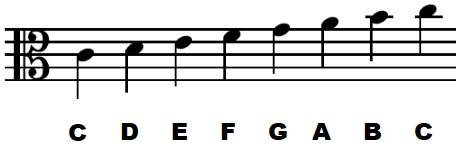
alto clef
Musical Notes Chart
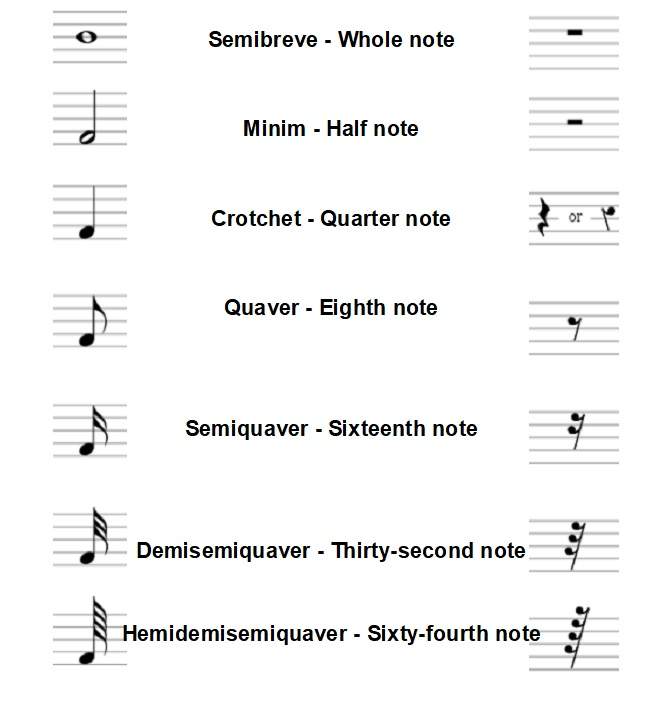
musical notes chart
Conclusion on musical notes
Understanding musical notes is essential for anyone who wants to learn to play an instrument or compose music. By learning the basics of note names and symbols, you can start reading and writing music and understanding the sonic characteristics of different notes.






